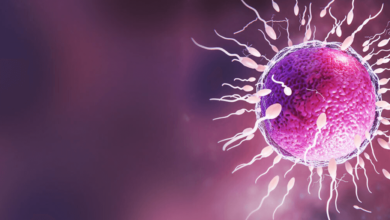The Hidden Link Between Chemical Relaxers and Hair Thinning: What Every Textured-Hair Woman Should Know

Chemical relaxers have long been celebrated for their ability to transform coily, curly, or kinky tresses into smooth, manageable strands. For many women with textured hair, that sleek look offers convenience, confidence, and versatility. However, beneath that polished exterior lies a hidden concern—hair thinning and long-term scalp health. In recent years, dermatologists and trichologists have raised awareness about how frequent relaxer use can compromise the scalp’s integrity, disrupt natural growth cycles, and even trigger conditions like traction alopecia. This article explores the biological link between chemical relaxers and hair thinning while guiding you toward healthier alternatives such as relaxed hair extensions, which help you maintain a beautiful, relaxed appearance without risking your natural mane.
Understanding the Structure of Textured Hair and How Relaxers Affect It
Textured hair, by nature, has a unique curl pattern that makes it beautifully voluminous but also more fragile. Its coiled structure means that the natural oils from the scalp have a harder time traveling down the shaft, leading to dryness and increased vulnerability. Because of this delicate balance, many women turn to styling alternatives such as Relaxed Hair Extensions to achieve a sleek, straight appearance without permanently altering their natural texture.
When chemical relaxers are applied, they break down the hair’s protein bonds—specifically the disulfide bonds responsible for curl formation. This process permanently alters the structure, making strands appear straighter but also weaker. In scientific terms, the sodium hydroxide or guanidine hydroxide found in many relaxers penetrates the hair’s cortex, rearranging the keratin molecules. While this chemical alteration gives immediate results, it simultaneously reduces elasticity, moisture retention, and tensile strength. Over time, repeated applications can cause split ends, breakage, and a noticeable decrease in overall thickness.
Recognizing the Early Signs of Relaxer-Induced Thinning and Alopecia
One of the biggest mistakes many women make is dismissing early warning signs of damage as “normal shedding.” However, the symptoms of relaxer-related thinning can often be subtle at first. If you notice increased hair in your comb, thinning at the crown, or sensitivity along your edges, it may indicate scalp trauma.
Some of the most common early signs include:
- Persistent itching or burning sensations even days after relaxing
- Thinning around the temples or crown area
- Short, uneven strands that break easily near the root
- Reduced fullness or density over time
Alopecia caused by chemical relaxers often begins as traction alopecia—where tension and chemical burns disrupt the follicles. In severe cases, scarring alopecia can occur, meaning the follicles are permanently damaged. Consulting a licensed dermatologist or trichologist early can make all the difference in reversing these effects.
When transitioning, it’s best to avoid tight hairstyles or additional chemical treatments. Instead, consider low-manipulation protective styles that promote airflow and minimize stress. For example, many women find that lightweight, natural-textured extensions like Wavy Hair Clip In Extensions provide an ideal way to enhance volume and style flexibility while protecting delicate new growth. These extensions blend effortlessly with relaxed or natural hair and let your scalp recover without constant manipulation.
Safer Relaxer Formulas and Neutralizing Treatments: Are They Truly Effective?
The beauty industry has evolved significantly, with brands introducing “gentler” or “no-lye” relaxers claiming to be scalp-safe. While these products reduce irritation, they still rely on active chemicals that alter the hair’s natural pH balance. The truth is that no relaxer can fully protect the hair’s protein bonds once applied—it’s simply a matter of minimizing damage.
However, some neutralizing treatments and aftercare routines can help mitigate harm:
- Neutralizing shampoos to restore pH balance after relaxing
- Protein treatments to rebuild strength in weakened strands
- Deep-conditioning masks with ingredients like shea butter, keratin, and biotin to restore elasticity
- Scalp serums with peppermint oil or niacinamide to stimulate blood flow and reduce inflammation
By implementing a consistent care regimen, women can extend the life of their relaxed styles while keeping their scalp healthy. Still, experts emphasize alternating between chemical and protective styling phases to allow your natural mane to breathe.
Transitioning from Chemicals to Healthier Styling Alternatives
Transitioning away from chemical relaxers doesn’t mean you have to sacrifice your style or confidence. The key is embracing protective alternatives that mimic the same polished look. Using heat-free methods like silk pressing or opting for high-quality extensions allows your hair to recover naturally while maintaining your preferred aesthetic.
Protective styling with natural-looking options also encourages new growth and gives your hair follicles time to heal. This transition period can take anywhere from six months to a year, depending on how frequently you’ve relaxed your hair. During this phase, deep moisture treatments and minimal heat styling are essential to prevent additional breakage.
Incorporating gentle detangling techniques and regular trims will also help retain length. You can also enhance your look by adding lightweight extensions that match your desired texture or volume—ensuring that your natural roots remain healthy underneath.
FAQs: Understanding Relaxer Damage and Hair Recovery
Q1: Can hair grow back after relaxer damage?
Yes, but it depends on the severity of follicle damage. If scarring alopecia has not developed, your tresses can regrow with proper scalp care and protection.
Q2: How long should I wait between relaxer applications?
Experts recommend waiting at least 8–12 weeks to reduce overlapping and prevent excessive scalp irritation.
Q3: What are the best oils for restoring relaxed or transitioning hair?
Light oils like jojoba, argan, and avocado oil penetrate deeply and provide essential nourishment for both the scalp and strands.
Q4: How can extensions help during recovery?
Extensions, especially those like wavy hair clip in extensions, allow you to enjoy versatility while shielding your natural mane from manipulation and heat exposure.
Q5: When should I seek professional help?
If you experience persistent scalp irritation, visible thinning, or patchy bald spots, it’s crucial to consult a trichologist immediately for a personalized treatment plan.
Final Thoughts
Understanding how chemical relaxers affect textured hair is essential to maintaining both beauty and health. The journey toward recovery doesn’t mean giving up style—it simply means making smarter choices. By balancing care, protection, and confidence-boosting alternatives like relaxed hair extensions, you can preserve your natural crown and embrace the best of both worlds: sleek sophistication and thriving, healthy growth.





